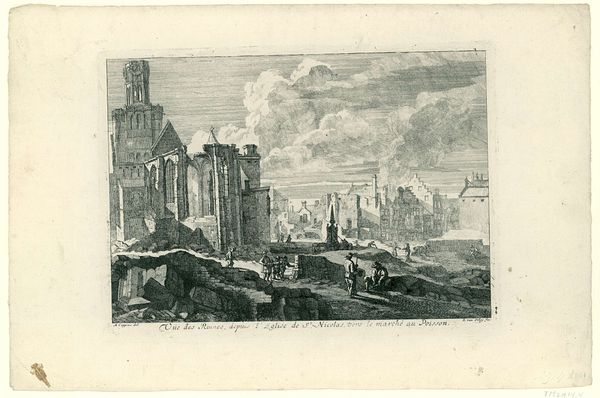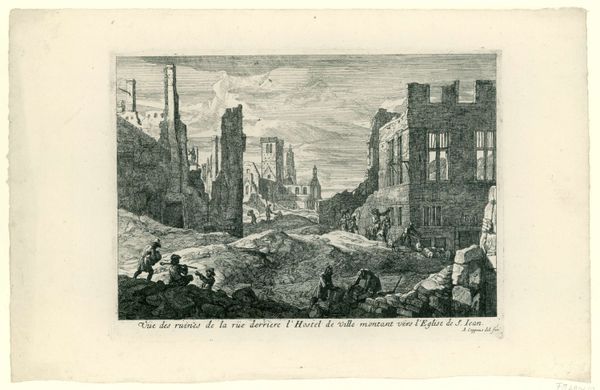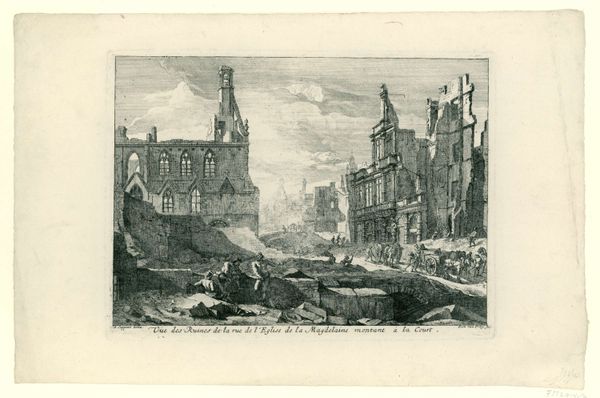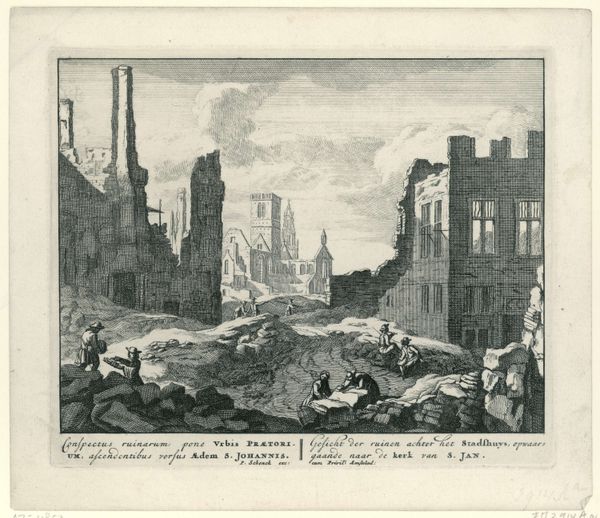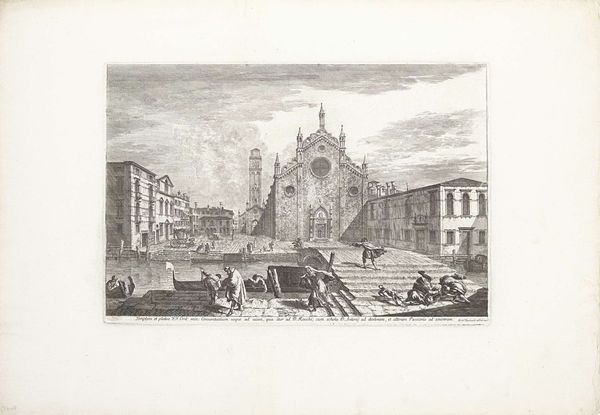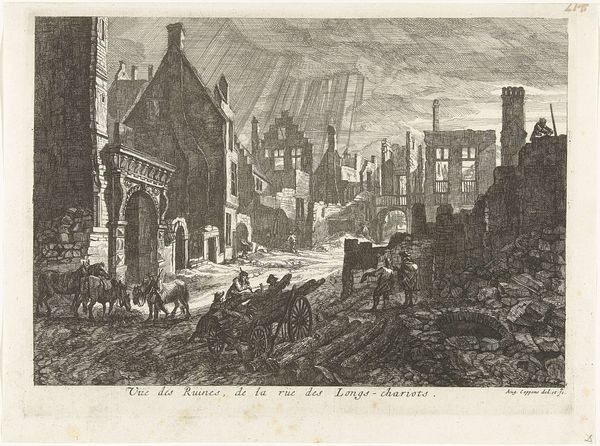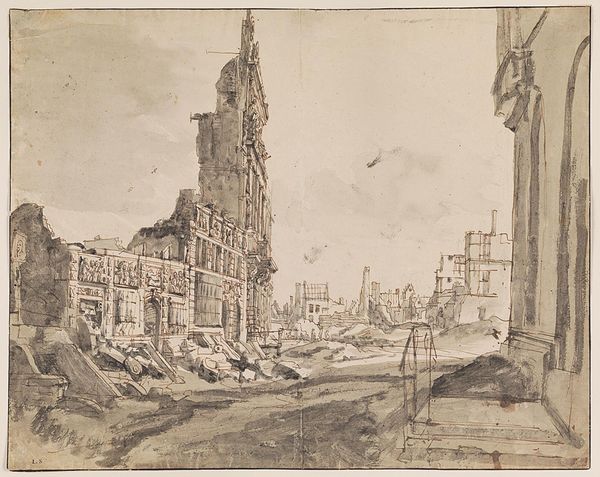
print, engraving
#
baroque
# print
#
landscape
#
perspective
#
cityscape
#
history-painting
#
engraving
Dimensions: height 250 mm, width 385 mm
Copyright: Rijks Museum: Open Domain
Curator: Here we have Richard van Orley's engraving, "Ruïnes op de Grote Markt te Brussel, 1695", or "Ruins on the Grand Place in Brussels, 1695." Editor: It’s stark, isn’t it? All that meticulous detail dedicated to destruction. The mood is palpably somber, a city brought low, captured with a very linear and almost detached precision. Curator: Yes, the detail is significant. Consider that this is an engraving. The process of carefully incising lines into a metal plate to then produce a print requires a high degree of skill and labor. These ruins are rendered not just as devastation but as a deliberate record. What does it signify to painstakingly document ruins? Editor: For me, the prominent ruins immediately evoke images of fallen empires. Brussels, reduced to rubble, takes on the symbolic weight of transience. It suggests not just physical loss, but also a loss of identity and historical continuity. Are we meant to contemplate the impermanence of even the grandest human achievements? Curator: Quite possibly. Now, this work was made following the bombardment of Brussels by French troops in 1695. The Grand Place, historically the heart of the city's economic and political power, was deliberately targeted. So it’s as much about remembering the act of aggression, as reflecting upon the tragic consequences. Also note the medium: prints could be disseminated widely, a potent method of circulating information and shaping public opinion. Editor: The figures amongst the rubble – almost indifferent – contribute to this air of fatalism. Perhaps they symbolize resilience too. Is there evidence that the symbols reflect resistance, perhaps hinting at architectural resilience? Curator: Well, if you look closely at the remaining facades, there are echoes of classical architectural motifs even in their ruined state. The buildings spoke to power before, now perhaps they speak to survival. Editor: It gives one pause to realize that the material evidence of what can be achieved is often intertwined with narratives of what has been lost. Van Orley’s image freezes a moment heavy with both despair and defiant history. Curator: Agreed, reflecting upon how social and political upheaval imprints itself on both the landscape and our cultural memory makes you really consider its broader significance.
Comments
No comments
Be the first to comment and join the conversation on the ultimate creative platform.
